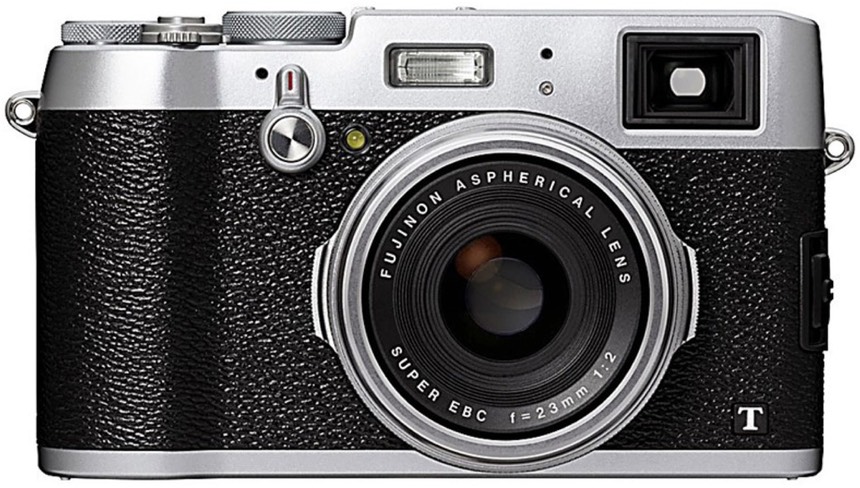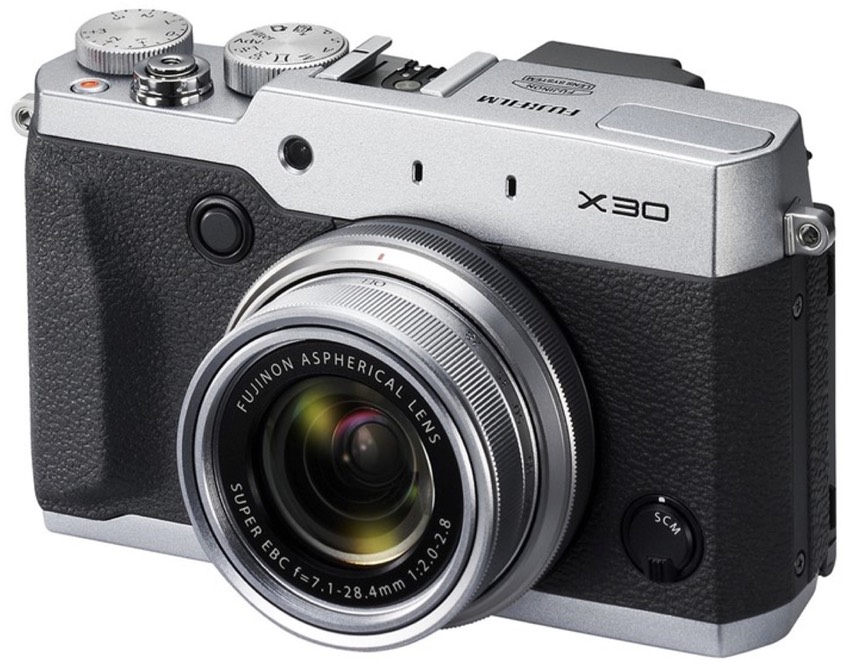Late last month Fujifilm announced the X30 camera, the latest in the X## series of cameras. Today Fujifilm announced the X100T, the latest in the X100 series.

The X100T is the third in the series of cameras, each of which has had major improvements over the previous. In the case of the T version, the big improvements are in the displays. The EVF adds a new electronic tab that can appear in the optical viewfinder view, allowing a digital split image view as well as the optical view. The control lever on the front of the camera that controls the hybrid EVF now has an extra position to enable that tab. In addition, the EVF itself now has the fast near 60 fps refresh that first appeared on the XT-1’s EVF. Parallax adjustment has improved, as well, meaning less focus-and-recompose situations at close distances.
Meanwhile, the rear LCD has gone from 2.8” 460k dot to 3” and 1.04m dot. Other changes to the camera include an electronic shutter mode that goes to 1/32000 second, third stop settings on the aperture ring, and more range on the exposure compensation control (now +/-3 stops). An additional customizable button has been added to the back, and the control layout more closely resembles that of the X mirrorless cameras now. Indeed, the changes made to the X-T1 Graphite Silver model all seem to be present in the X100T, as well, including the addition of a Classic Chrome film simulation, the customizable Q button, and spot metering following the focus point.
Other aspects of the US$1299 X100T are basically the same as the X100S: 16mp APS X-Trans sensor, 23mm f/2 fixed lens, built-in flash, and built-in wireless. The X100T uses the same NP-95 battery (good for 330 shots CIPA), which is a good/bad news thing; many users were hoping for a larger battery capacity on the updated model. The whole package comes in at about a pound (440g), and at a size that’s bigger than shirt-pocketable.
Overall, the X100T is a nice update that will keep the camera current for the time being. Personally, I think the sensor is a slight weak point in an otherwise fine camera. I’d really like to see the Sony 24mp APS sensor in such a package.

Meanwhile, the X30 is the third in Fujifilm's series of small-sensor compacts (12mp 2/3” X-Trans sensor). The big changes are similar to those in the X100T over its predecessor: new viewfinder (now fast EVF instead of optical), larger and better rear LCD (3” 920k dot) that tilts, Classic Chrome simulation. We also get a control ring around the lens and WiFi that weren't on the X20. What remains the same is the 28-112mm (equivalent) f/2-2.8 lens, built-in flash, and basic body design. The NP-95 battery is now good for 470 shots CIPA, which is a big improvement over the X20.
The big improvement in the X30 has to be the EVF, though. Not only do you get an accurate view, but an impressively big and usable one. That said, I think that’s a bit wasted on the 12mp 2/3” X-Trans sensor. Unlike the 16mp APS version of the sensor, I find the smaller version has clear deficiencies when it comes to outputting at maximum size, especially in low light conditions. Still, it’s nice to see a camera company not completely abandon an old design for a new design, but instead try to refine it. The X40 is going to need a better sensor, IMHO, for this product to remain compelling. That said, at the US$599 price, the X30 delivers a lot. Just don’t expect it to be competitive at large print sizes and especially in very low light.
Support this site by purchasing from this advertiser:


